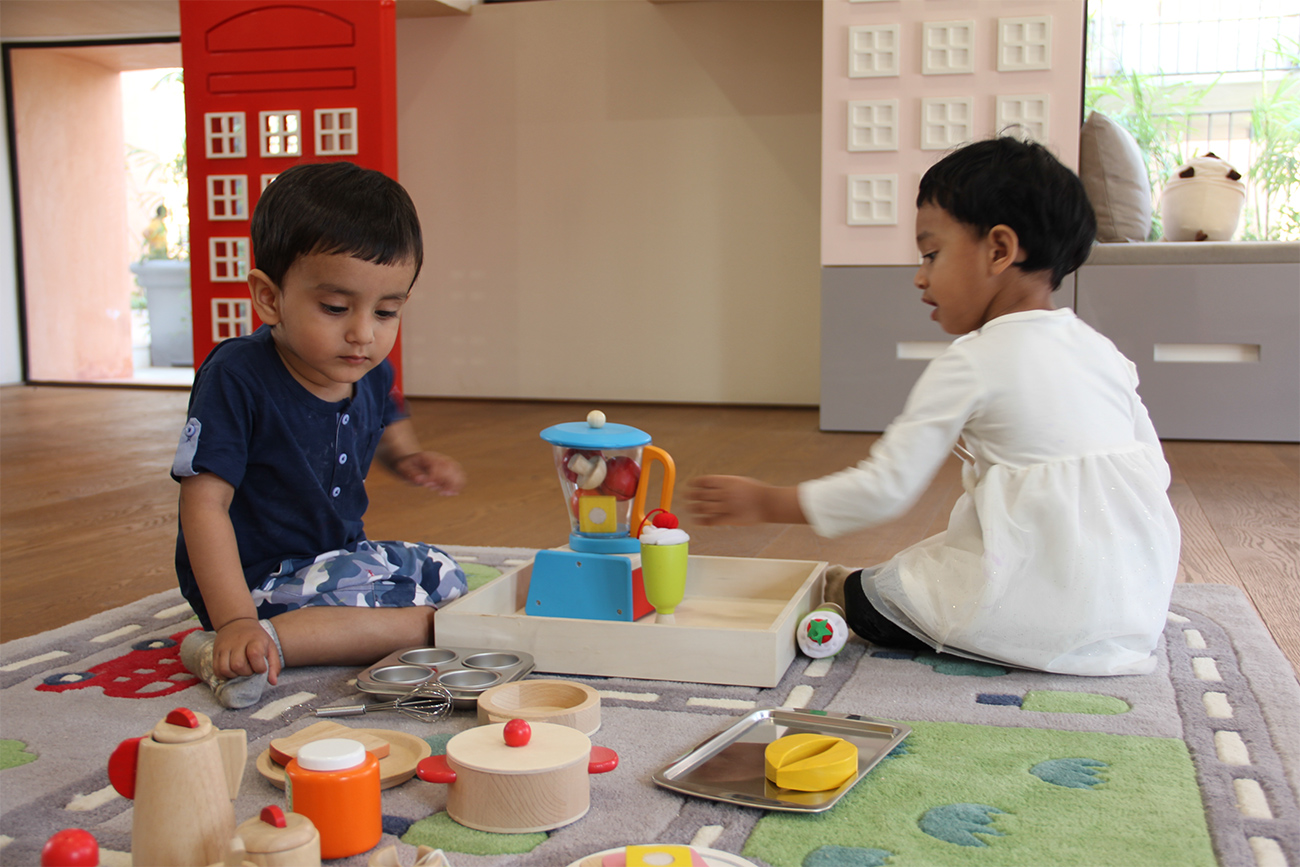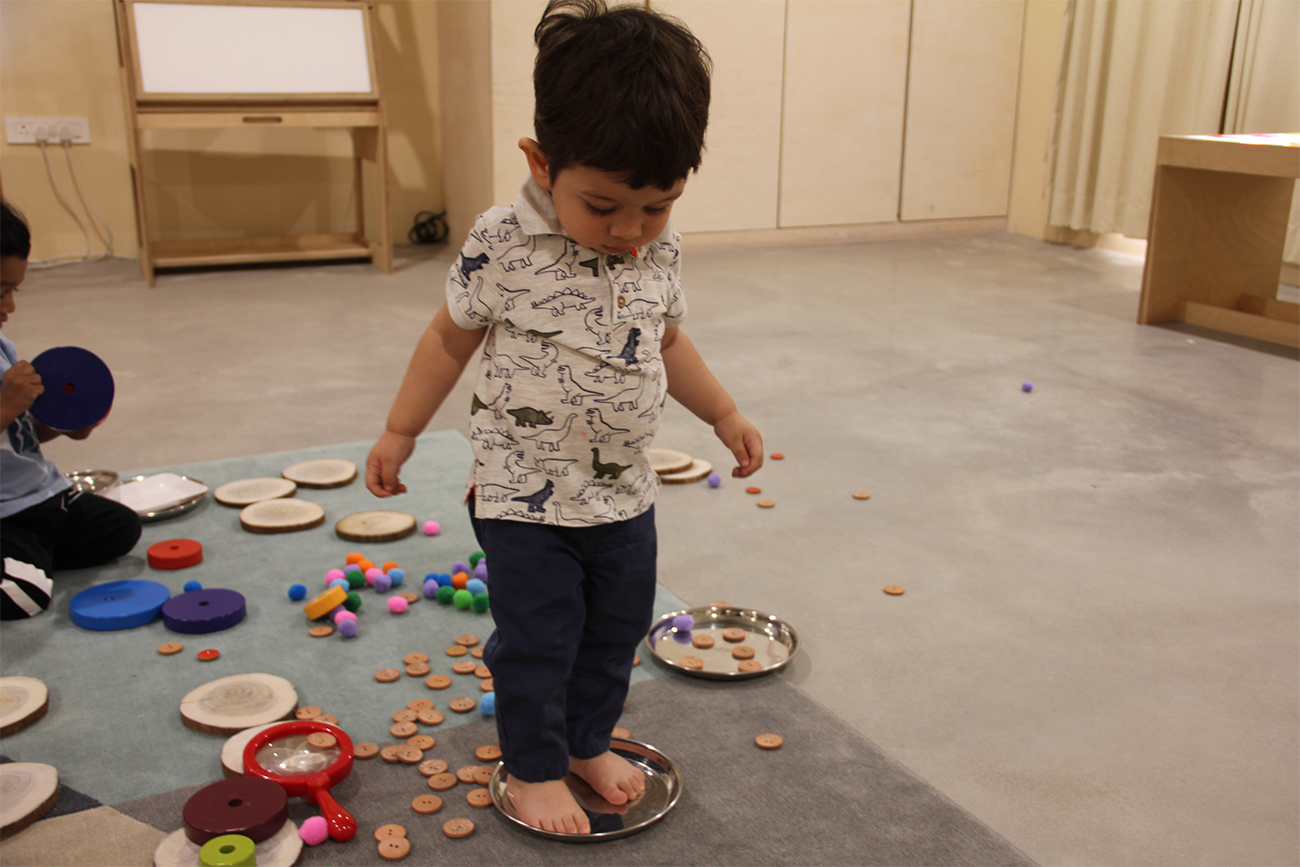13 Sep Power of Provocation in Reggio Learning (Part 1)
The learning that comes from the free environment provides an opportunity for children to think or develop their own thinking rather than being just led by the obvious existing knowledge. Allowing children to explore and express their interests and capabilities paves the way for new possibilities of understanding & learning. Such learning is only possible when children are given an environment where such explorations can take place. The Reggio Emilia approach aims to provide that as the crux of their philosophy.
Reggio approach understands environment as the third teacher, apart from the teachers and parents. The environment here focuses not only on the natural environment but the learning environment which could be both- indoors or outdoors. As this learning comes from the experiences that the kids go through; the setup place for Provocation doesn’t matter much; a Provocation could be set up either in a classroom or in an open natural environment.
A set Provocation that ignites the thinking process leads to deeper learning, these experiences are imprinted stronger into the memories of children. Kids can retrieve these valuable experiences & memories as and when required either in their context of learning or during their life journey. Going back to the beginning of the process, the encouragement that children receive in the Reggio approach is the Provocation. Provocation setup is the center of the Reggio concept. It is the learning environment through these Provocations that the teacher provides to the learners. Provocations have to be very thoughtfully designed and laid out, which should arouse interest in learning.
One can understand Provocation as stimulation through materials, papers, colors, nature, or any other tinkering things. It could be any activity designed in the class for children that have no predetermined outcome but, each child takes their own learning from it as per their interest. For eg., A teacher may provide kids with colorful papers, pencils/ sketch pens/ pens/ markers to write letters on a table that has an uneven surface. Here children learn that they just cannot write on any surface- each surface has its own limitations; however, a surface will have different effects & impacts on their writing. Along with the surface, there are other factors too that need to be taken into consideration like- colors, writing material, papers, etc.
Provocation invites these kids to use their ideas and see what are the possibilities with the given surroundings and things in hand. Some might use the same material to color, some to write alphabets, some can even draw or simply scribble, the possibilities are endless and unimaginable. Provocation not only attracts children to do activities available around them but also encourages them to do the activities in a different way, through their own imagination & understanding. This understanding of how one Provocation can have multiple uses, purposes, and possibilities urges kids to observe, analyze and come to conclusions by participating in various activities. The activities could be anything from just observing or looking at a photograph, using simple stones, just staring at clouds, playing with blocks or a piece of cloth – anything and everything can be used to provoke ideas, discussions, and questions.
To aid the Provocations, teachers initially select the objects known to these kids, to gear up their creativity and further motivate kids to take their ideas to the next level. Understanding that acquiring knowledge is a process and Provocations do not identify anything as ‘wrong’, it is just another way of looking at things. Using a whisk to turn it into a screwdriver is just another utility of it that the child learns.
Provocation uses a variety of setups for inviting children- to learn to take initiative, to think out of the box, to express themselves freely, to explore with their peers, to make decisions, and much more.
Some of the commonly observed provocations are:
- Places – Visits to museums, parks, woods, markets, etc.
- Nature – moon, eclipses, leaves, bees, water, seasons, etc.
- Structures and designs – buildings, geometrical or random arrangements, alignments, inside of a clock, lightings, shadows, Eiffel tower, etc.
- Situations – storytelling, event narrations, celebrations, group activities.
- Randomness – atelier arrangements, cooking in the kitchen, observing a photograph, tending a pet, helping others, etc.
These are just the mediums of creativity and experiences for children. They inspire to associate their experiences with their hands, eyes, and mind. When these little learners wonder and come up with questions and an understanding of their own, Provocation is deemed to be a successful one. Amongst all this, teachers play a crucial and equally provocative role as they are the ones responsible for the arrangement of an open-ended or deliberately directed environment for children to acquire specific learning.




No Comments